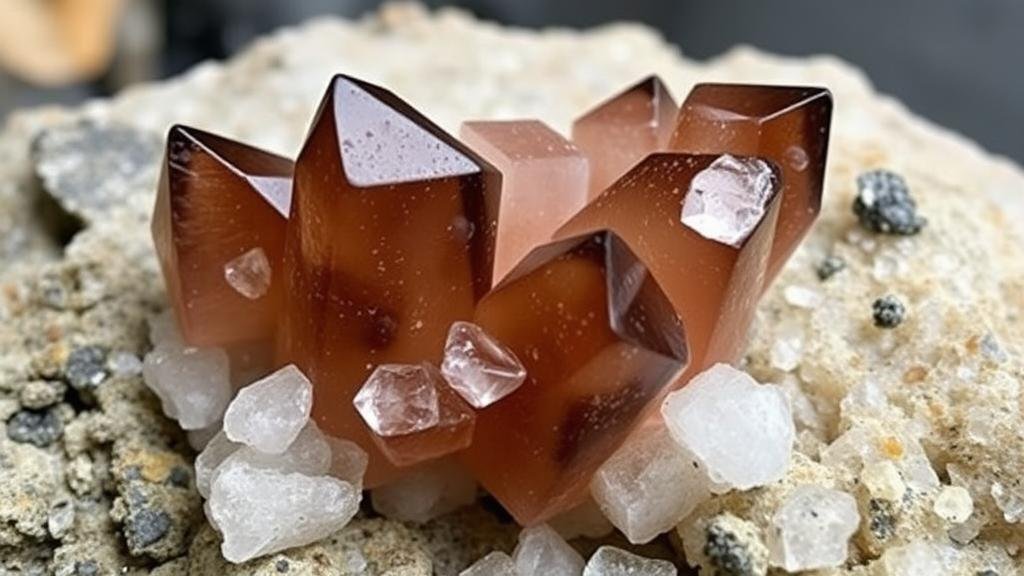Discovering smoky quartz crystals in pegmatites along the slopes of the Black Range.
Discovering Smoky Quartz Crystals in Pegmatites Along the Slopes of the Black Range
The Black Range, located in New Mexico, is an excellent location for rockhounds and mineral collectors searching for smoky quartz crystals. These gem-quality crystals are often found in pegmatites, which are coarse-grained igneous rocks that provide the ideal environment for the growth of minerals. In this article, we will explore the geological context of smoky quartz, the pegmatite deposits in the Black Range, and practical tips for successful collection.
The Geological Context of Smoky Quartz
Smoky quartz, characterized by its brown to black hue, is a variety of quartz that gets its color from natural radiation exposure during its formation. presence of aluminum and other trace elements can also influence the depth of its coloration. Smoky quartz typically forms in hydrothermal veins and can be commonly found in granite pegmatites.
Pegmatites are formed during the crystallization of magma. They consist of large crystals of feldspar, quartz, and mica, among other minerals. While the specific conditions for the formation of pegmatites are complex, it is generally accepted that these rocks can develop when a volatile-rich melt cools slowly. This allows for the growth of large crystals, including smoky quartz.
The Black Ranges Pegmatite Deposits
The Black Range is renowned for its diverse pegmatite deposits, which are rich in minerals. Some notable areas include:
- Old Placers: Known for its quartz, beryllium, and feldspar content.
- Hillsborough District: Offers a variety of quartz crystals, including easily recognizable smoky quartz.
- Cookes Peak: Famous for its pegmatites rich in tourmaline and various quartz varieties.
The region is primarily composed of granitic rock that has been weathered over millions of years, exposing the pegmatites. Smoky quartz in the Black Range is typically found in well-defined, hexagonal prisms that can measure several centimeters in length, though larger specimens are not uncommon.
For mineral collectors and rockhounds venturing into the Black Range to collect smoky quartz, consider the following practical tips:
- Research Locations: Familiarize yourself with specific pegmatites and their historical yields of smoky quartz.
- Visit During Dry Months: Late spring through early fall typically offers the best weather for exploration.
- Wear Appropriate Gear: Solid hiking boots, gloves, and protective eyewear are essential for safety during your expedition.
- Use Proper Tools: A rock hammer, chisels, and hand tools can help in carefully extracting crystals from pegmatite outcrops.
- Respect Regulations: Always check local laws regarding mineral collection to ensure that you are not trespassing or breaking any regulations.
Real-World Applications and Significance of Smoky Quartz
Beyond its aesthetic appeal, smoky quartz has various applications. In the gemstone industry, it is cut and polished for jewelry, often used in statement pieces due to its striking appearance. Its metaphysical properties are also widely recognized; smoky quartz is believed to possess protective and grounding qualities, making it popular among crystal enthusiasts.
Explorations of this mineral may also have scientific significance. Quartz is often used in electronic applications due to its piezoelectric properties. Further study on mineral deposits, including those found in the Black Range, can contribute valuable information to geology and mineralogy.
Conclusion: Your Next Adventure Awaits
Discovering smoky quartz crystals in the pegmatites along the slopes of the Black Range presents an exciting opportunity for collectors and enthusiasts. With its stunning appearance and rich geological context, smoky quartz not only offers aesthetic value but also serves multiple practical purposes. As you plan your visit, remember to equip yourself with knowledge, tools, and respect for the natural environment. Happy hunting!



